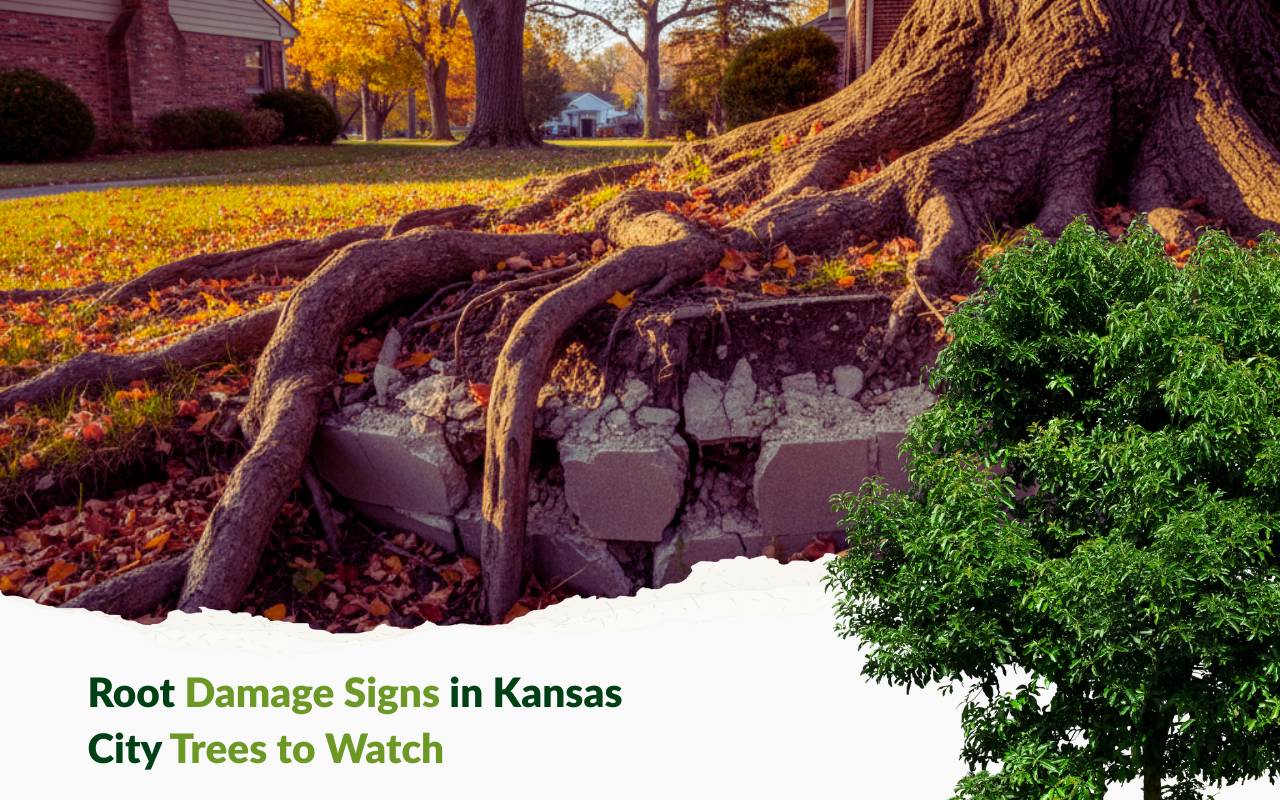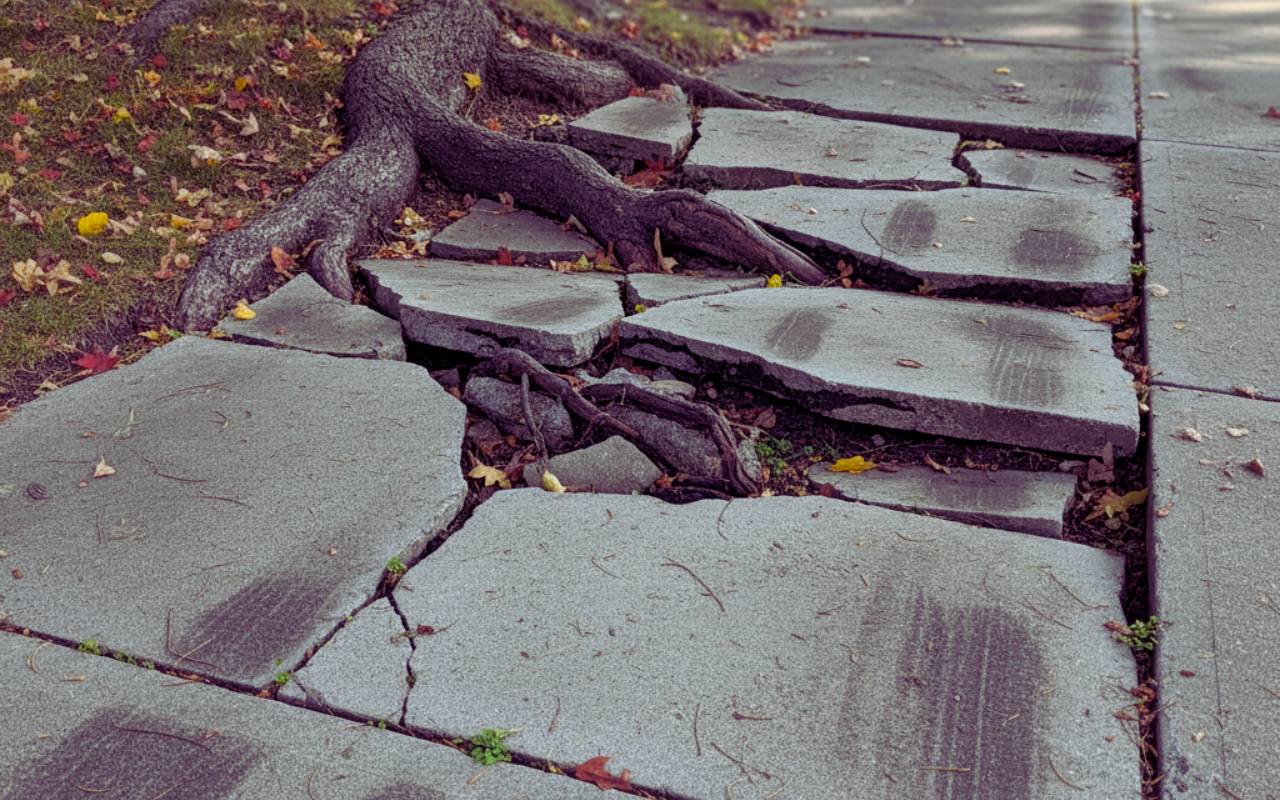
Uncover how to recognize early root damage and protect your landscape. Trees in Kansas City face unique urban challenges, and understanding the warning signs can help prevent costly issues. Whether you care for a tree on private property or one maintained by the city, knowing the basics of Public vs. private property tree rules in Kansas City is essential. These insights empower you to act quickly and avoid conflicts related to Contact local professionals when needed.
Common Causes of Root Damage in Kansas City Trees
Root damage often starts unnoticed. Heavy construction around homes or public areas disturbs the soil structure. Machinery or vehicles compact soil, particularly near the city right-of-way basics, limiting oxygen and moisture. This compaction gradually weakens roots and increases stress. Extended droughts in Kansas City also contribute to damage, forcing shallow roots to struggle for water.
- Excessive soil compaction from vehicles or foot traffic.
- Construction digging or trenching near root zones.
- Improper irrigation during summer months.
- Tree placement too close to sidewalks or driveways.
- Neglect of sidewalk tree responsibilities leading to growth distortion.
When trees grow too close to concrete, roots twist or girdle, restricting nutrient flow. Poor soil quality and pest infestations worsen the issue. Understanding these causes helps you preserve healthy trees and prevent further decline while staying compliant with Public vs. private property tree rules in Kansas City.
Visual Signs of Root Damage in Trees
Root damage shows itself through subtle yet critical signs. Look for raised soil, cracks near the base, or mushrooms growing around the trunk. These may indicate decaying roots. Soft or splitting bark also reveals internal distress.
- Soil heaving or uneven ground near the trunk.
- Mushrooms or fungal growth at the base.
- Cracked or hollow trunks.
- Unusual leaf loss or thinning canopy.
- Falling branches or limbs during mild wind.
Liability for falling limbs becomes a concern when weakened roots fail to anchor trees securely. Early detection allows for quick solutions before greater hazards appear, especially for trees managed under Public vs. private property tree rules in Kansas City.
Impact of Root Damage on Tree Health
Roots act as the life support system of any tree. When damaged, the entire structure weakens. Leaves may yellow or fall early, and branches may die back gradually. This decay leads to loss of shade and beauty. Understanding overhanging branches rights helps you manage affected limbs responsibly and prevent hazards.
Weakened roots reduce the tree’s stability and its ability to absorb nutrients. Trees facing this stress often become vulnerable to pests and disease. Regular monitoring and professional assessment help maintain both tree health and neighborhood safety in accordance with Public vs. private property tree rules in Kansas City.
Assessing Liability for Damaged Trees in Kansas City
Liability depends on location and ownership. Homeowners handle maintenance for trees on private lots, while Kansas City manages those in public areas. Trees growing in the city right-of-way basics belong under municipal care, including pruning and removal duties.
If damage crosses property lines, understanding who owns a boundary tree prevents legal trouble. Neighbors may share costs and responsibility when roots or limbs extend across properties. Familiarity with Public vs. private property tree rules in Kansas City ensures that you act correctly and protect your interests.
Understanding Property Boundaries in Relation to Trees
Tree roots don’t follow fences or markers, so identifying property lines is vital. Check your survey map before removing or trimming roots. Discuss with neighbors to determine who owns a boundary tree before making changes. Cooperative maintenance prevents disputes and ensures shared safety.
- Review property surveys to locate accurate boundaries.
- Communicate clearly before trimming shared trees.
- Respect overhanging branches rights to avoid conflict.
- Address sidewalk tree responsibilities together.
Mutual understanding about boundaries prevents costly mistakes. It’s always better to act collaboratively than to face legal claims later, especially under Public vs. private property tree rules in Kansas City.
City Regulations on Tree Maintenance and Removal
In Kansas City, permits are often required to trim or remove trees within the public right-of-way. These laws protect green spaces and public safety. Failing to follow regulations could result in fines or citations. Understanding Public vs. private property tree rules in Kansas City helps ensure compliance and accountability.
Always contact the city before beginning major tree work near sidewalks or curbs. Following rules ensures that overhanging branches rights and public safety remain respected. Taking proper steps supports a healthy, sustainable urban forest.
Proper Tree Care Practices to Prevent Root Damage
Preventing root damage starts with consistent care. Deep, slow watering encourages strong root development. Mulching around the base retains moisture and stabilizes soil temperature. However, avoid piling mulch against the trunk to prevent rot. Consider installing root barriers to guide growth away from sidewalks or driveways.
- Water deeply once a week during dry spells.
- Apply a 2-3 inch mulch layer around the base.
- Limit foot traffic over root zones.
- Inspect roots annually for visible stress.
These simple actions protect both tree health and your property’s integrity. Consistent care also reduces potential liability for falling limbs in storms according to Public vs. private property tree rules in Kansas City.

Seeking Professional Help for Root Damage Assessment
When visible signs of damage appear, consult a certified arborist. Experts use specialized tools like resistographs or ground-penetrating radar to assess root health. They can diagnose decay before it spreads and recommend corrective actions.
Professionals can also advise on overhanging branches rights and liability for falling limbs. Scheduling an inspection ensures accurate solutions and long-term protection. For expert help, reach out through the Contact page and schedule an assessment.
Importance of Early Detection and Treatment of Root Damage
Detecting damage early gives you an advantage. Adjusting irrigation, treating with fungicides, or pruning selectively may restore health. Ignoring small issues often leads to severe deterioration and expensive removals. Stay observant and proactive.
Timely intervention protects both your property and community safety. When trees collapse or shed limbs, damage can extend beyond your yard. Quick action minimizes risks and strengthens Kansas City’s tree canopy for everyone.
FAQs About Tree Roots and Property Rules in Kansas City
How can I tell if my tree has root damage?
Watch for soil heaving, fungal growth, or leaning trunks. These visual cues suggest stress or decay beneath the surface.
Who owns a boundary tree between two properties?
Ownership usually depends on where the trunk stands. Discuss details with your neighbor to avoid misunderstandings or disputes.
What are my rights regarding overhanging branches?
You may trim branches that cross your property line, but avoid harming the tree. Respect overhanging branches rights to stay compliant.
What does the city right-of-way basics include?
It covers the space between sidewalks and streets. Trees here typically fall under municipal responsibility and maintenance.
Who handles sidewalk tree responsibilities?
Homeowners maintain adjacent sidewalks, while the city manages trees planted in designated right-of-way zones. Check local ordinances for clarity.
Ensuring Tree Health and Property Safety in Kansas City
Protecting tree roots preserves your property and the city’s greenery. By staying aware of early signs and following the Public vs. private property tree rules in Kansas City, you ensure proper care and compliance. Understanding who owns a boundary tree, sidewalk tree responsibilities, and city right-of-way basics helps you act wisely. If concerns arise, don’t hesitate to Contact a tree care expert for professional support.
